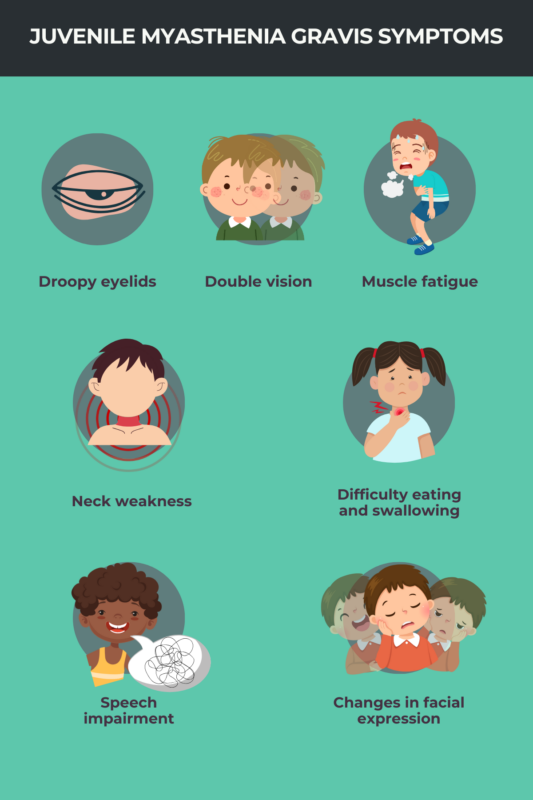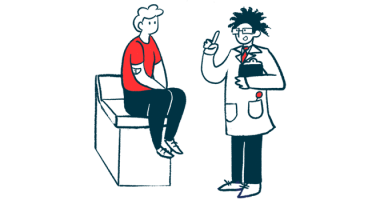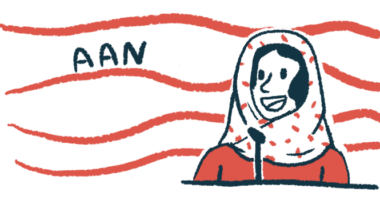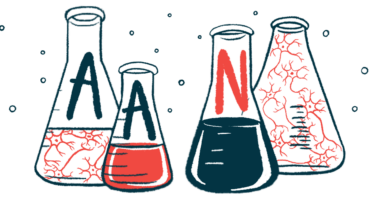Juvenile myasthenia gravis
Myasthenia gravis (MG), an autoimmune neuromuscular disorder characterized by muscle weakness and fatigue, can occur at any age. When the rare disorder affects children and teens, it is called juvenile myasthenia gravis, or JMG.
In the U.S., myasthenia gravis in children accounts for approximately 1 in 10 cases of MG. Juvenile myasthenia gravis symptoms usually begin before age 18. It typically is a lifelong condition requiring ongoing treatment, though it may go in and out of remission.
In JMG, a child’s immune system mistakenly targets the communication between nerves and muscles in the body. The disorder can affect various muscle groups, including those responsible for breathing and swallowing. Symptoms vary in severity and sometimes get better with rest.
Early diagnosis and treatment can help manage this chronic condition and improve quality of life for those living with juvenile MG.
Who does juvenile myasthenia gravis affect?
Juvenile MG, by definition, affects children younger than 18 years of age. Teenage girls seem to be more likely to be diagnosed with this condition than are boys.
JMG is relatively rare in Europe and North America and it has a higher likelihood of occurrence in Asian populations, particularly in children and teens younger than age 15.
Causes of juvenile myasthenia gravis
The juvenile form of MG is associated with the presence of self-reactive antibodies that target and damage proteins involved in nerve-muscle communication. That, in turn, causes muscle weakness and fatigue.
Self-reactive antibodies, or autoantibodies, that target the acetylcholine receptor (AChR) are common in adults with MG — and thus are used to diagnose the disorder. Children and adolescents, however, typically have lower levels of these antibodies compared with adults, which makes the condition harder to diagnose. This is especially true in children whose symptoms start before puberty.
Children with juvenile MG also may have abnormalities in their thymus, a gland that is part of the immune system and is believed to trigger or help support the production of the antibodies that cause myasthenia gravis. An enlarged thymus, called thymus hyperplasia, is the most frequent thymus issue in children with MG.
Signs and symptoms of juvenile myasthenia gravis
The most typical juvenile myasthenia gravis symptoms are similar to those seen in adults, although the percentage of children having only ocular symptoms is higher, particularly among youngsters who have not yet gone through puberty.
Some of the early symptoms of JMG are:
- droopy eyelids (ptosis) and/or double vision
- fatigue that often worsens during the day or after exercise or other kinds of exertion
- difficulty eating and swallowing.
Some children also experience shortness of breath or speech impairment, or have difficulty with facial expressions, such as smiling or raising their eyebrows, due to facial muscle weakness.
When JMG starts before puberty, it commonly only affects muscles that control eye and eyelid movements. In adolescents who have reached puberty, JMG often causes widespread muscle weakness.
The symptoms and diagnostic criteria for JMG are generally similar to those in adults, but treatment can vary.
Diagnosis of juvenile myasthenia gravis
Because juvenile MG is a rare condition, and its symptoms can overlap with those of other diseases, it may take doctors time to accurately diagnose the disorder.
Diagnosing JMG involves a series of medical evaluations and tests. A doctor may start by taking a detailed health history, asking about the child’s symptoms, when they began, and whether the family has any history of autoimmune diseases.
A physical examination typically is done to assess muscle strength, reflexes, and muscle fatigue. A neurologist, a physician who specializes in nervous system disorders, may be involved in the evaluations. The doctors will look for characteristic signs of muscle weakness that worsen with activity and improve with rest.
Doctors also may do tests to confirm a suspected juvenile myasthenia gravis diagnosis:
- A blood test may be done to look for elevated levels of antibodies against the acetylcholine receptor.
- An injection of a medication called edrophonium chloride, which temporarily improves muscle strength, may be given — this is also called a tensilon test.
- A repetitive nerve stimulation test may be done, which involves sending electrical impulses to a nerve and measuring how the muscle responds.
- Electromyography and nerve conduction studies may be used to identify any abnormal patterns of muscle response that are common in MG.
- Computed tomography (CT) or magnetic resonance imaging (MRI) may be used to look for thymus gland abnormalities, including an enlarged gland.
Treatment of juvenile myasthenia gravis
A personalized treatment plan for JMG should take into consideration a child’s overall health, medical history, the severity of symptoms, and the response to medications and other therapies.
Medications can include cholinesterase inhibitors like Mestinon (pyridostigmine), which often are the first-line treatment for symptom management of JMG. The corticosteroid prednisone may be used as a first-line immunosuppressant.
Second-line treatments, such as azathioprine and mycophenolate, may be considered when steroids are not managing symptoms, or if side effects from first-line therapies are hard to tolerate.
In addition to taking medications as prescribed, it’s important that a child with JMG gets sufficient sleep, incorporates rest periods during the day, eats a healthy diet, and exercises regularly.
Plasma exchange, a technique in which a person’s plasma can be cleaned, in effect, of harmful antibodies, is another treatment option, as is intravenous immunoglobulin, known as IVIG. In IVIG, the patient receives a concentrate of antibodies to try to normalize the immune system. Such treatments may be used in situations that include severe disease flare-ups or a myasthenic crisis, which is a severe episode of muscle weakness that can make it very hard to breathe.
Children who may be having a myasthenic crisis — often marked by difficulty breathing — need to be treated immediately at a hospital. They may require breathing support with mechanical ventilation, in which a machine assists with breathing, or non-invasive methods such as bilevel positive airway pressure (BiPap) or continuous positive airway pressure (CPAP).
Treatment for juvenile myasthenia gravis also may involve surgery to remove the thymus gland, a procedure called a thymectomy. The effectiveness of such surgery for juvenile MG patients is not as well proven as it is for adults with the condition, however.
Children with ocular symptoms also should be monitored by an ophthalmologist to prevent a condition known as lazy eye, also called amblyopia. It can occur when one eye is misaligned, preventing both eyes from focusing on the same point.
Juvenile myasthenia gravis life expectancy
With the right treatment, the life expectancy of children with juvenile myasthenia gravis is nearly normal. Children, particularly those who develop the condition before reaching puberty, experience a higher likelihood of disease remission than do adults.
Some of the factors affecting longevity are:
- age of onset, with children who have not reached puberty typically experiencing higher rates of an unexpected improvement from JMG
- symptom severity, with a better prognosis often seen in children who have milder forms of JMG
- treatment, as timely and appropriate medical care can help to better manage symptoms
- compliance, with children who stick with prescribed treatments generally having better long-term health
- risks, as myasthenia crises, other respiratory problems, and side effects from medications can shorten lifespan
- comorbidities, meaning other coexisting medical conditions, such as thyroid disease, which can have a negative impact on lifespan.
Working with healthcare professionals to tailor a comprehensive plan that addresses a child’s specific needs and circumstances can improve both life expectancy and quality of life for juvenile myasthenia gravis patients. Emotional and psychological support can help with mental health, and also contribute to a better quality of life.
Myasthenia Gravis News is strictly a news and information website about the disease. It does not provide medical advice, diagnosis, or treatment. This content is not intended to be a substitute for professional medical advice, diagnosis, or treatment. Always seek the advice of your physician or other qualified health provider with any questions you may have regarding a medical condition. Never disregard professional medical advice or delay in seeking it because of something you have read on this website.
Recent Posts
Related articles

 Fact-checked by
Fact-checked by 




